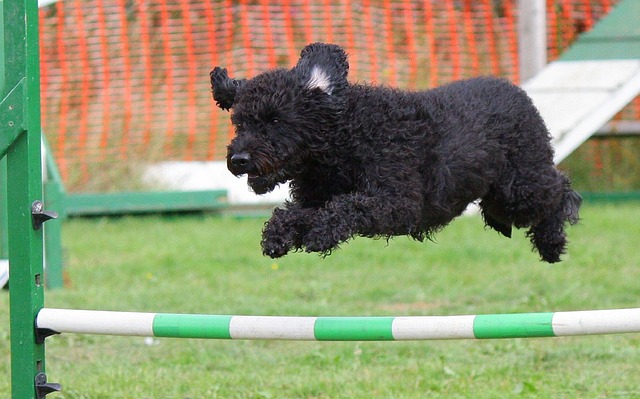Understanding Canine Body Language for Everyday Interactions
Recognizing common canine signals helps owners, caregivers, and professionals interact with dogs more safely and confidently. This short overview highlights observable postures, facial cues, and vocalizations to support everyday dogcare and enrichment decisions.

Dogs communicate much of what they feel and intend through body language. Observing posture, tail movement, eye contact, ear position, and mouth behavior can reveal whether a dog is relaxed, stressed, playful, or fearful. Paying attention to these cues supports better dogcare, safer encounters with unfamiliar pets, and more effective training. Understanding these signals also complements broader pet responsibilities like nutrition, grooming, and appropriate veterinary steps such as vaccination and microchipping.
How does canine behavior show emotions?
Dogs use a mix of posture, facial expression, and motion to share their state. A loose body, soft eyes, and a gently wagging tail usually indicate a relaxed, approachable dog. In contrast, a stiff stance, hard stare, closed mouth, and a high, fast tail sweep may signal tension or potential aggression. Yawning, lip licking, and turning the head away are common calming signals when a dog feels uncertain. Observing context—other animals, people, or recent events—helps interpret behavior correctly, and this skill benefits both everyday interactions and specialized situations like travel or visits to local services.
How can training change body signals?
Consistent, positive training shapes how dogs express themselves by building predictable responses to cues. A well-trained dog often shows calmer body language during handling, grooming, or vet visits because they associate these experiences with structured routines and rewards. Training methods that focus on positive reinforcement reduce anxiety-driven behaviors and improve responses to commands. Trainers and owners should watch for subtle stress signs—tense muscles, tucked tails, or reluctant movement—and adjust training pace. Integrating training with enrichment activities and appropriate nutrition supports overall wellbeing and clearer, more cooperative communication.
How does enrichment influence posture and play?
Enrichment—toys, scent games, social interaction, or structured exercise—affects how dogs carry themselves. Regular enrichment reduces frustration and repetitive stress behaviors, producing looser, more playful body language and fewer signs of anxiety. During play, dogs often display exaggerated movements, play bows, and bouncy gaits; these are usually friendly invitations. However, when play escalates, signals like pinned ears, stiffening, or persistent mounting suggest a break is needed. For multi-pet households or when introducing a dog to cats or birds, careful monitoring prevents miscommunication with catcare or birdcare routines.
What to observe during grooming and travel?
Grooming and travel are common stress triggers; reading body language helps make them less aversive. Signs of stress during grooming include trembling, avoidance, flattened ears, or freezing. Gradual desensitization and pairing handling with treats can shift a dog toward a relaxed posture. In travel, pacing, panting, drooling, or repeated yawning may indicate motion stress; secure carriers and familiar bedding can provide comfort. When seeking professional help, look for local services that emphasize gentle handling and positive reinforcement to ensure grooming, vaccination visits, or transport go smoothly for dogs and for pets involved in adoption or rehoming processes.
How to respond in firstaid and seniorcare situations?
Recognizing when a dog is in pain or distress is vital for firstaid and seniorcare. Subtle changes—reduced activity, altered gait, reluctance to be touched, or guarding a body area—often precede obvious signs. A dog in pain may tense up, flatten ears, growl when approached, or try to move away. In seniorcare, stiffness, slower reflexes, and changes in posture are common; adapting home routines, adjusting nutrition for joint health, and scheduling regular veterinary checks can improve comfort. Always approach an injured or painful dog cautiously and consult a veterinarian before attempting medical care.
What to know about adoption and microchipping?
Adoption and rehoming contexts benefit from clear observation of behavior during meet-and-greets. Shelter dogs may show stress signs—cowering, avoidance, or overexcitement—so allow time for a dog to settle and reveal more typical body language. Microchipping and up-to-date vaccination records are part of responsible adoption, helping reunite lost pets and protect public health. When adopting, ask about prior training, enrichment routines, nutrition plans, and any special needs related to seniorcare. Rehoming should prioritize gradual introductions and consistent care to help a dog adapt and display their relaxed, secure signals sooner.
Conclusion Attending to canine body language enriches everyday interactions, making care, training, grooming, travel, and healthcare more effective and humane. By learning common cues and contextually interpreting posture, facial expressions, and movement, owners and caregivers can reduce stress, prevent misunderstandings with other pets such as cats or birds, and support dogs through adoption, rehoming, and senior years. Observational skills paired with appropriate local services, proper nutrition, and regular veterinary care strengthen the human–dog bond and promote safer, clearer communication.





